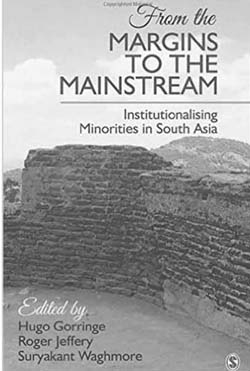The process of institutionalizing radical protest politics and their demands include a swathe of dilemmas and complexities that include the possibility of de-radicalizing and blocking the political and collective sense that such politics grounds them on. Thus, radical politics on the one hand wishes to witness institutionalization and mainstreaming of their politics to redefine political landscapes, while on the other, they wish to continue as radical protest politics maintaining the fervour and the process of wedging open social narratives that had little space hitherto. It has often been witnessed that political movements that institutionalize themselves in law, policy, and formal institutions carry the anxiety of deradicalizing themselves. The protests get entangled in legal dilemmas as has happened with the sub-caste politics, where mass mobilization was replaced by technical detailing of who is or is not eligible for reservations, or as has been the case with domestic violence where with 468(a) the issue was individualized, and became a matter of accessing the judiciary, or it could be the way sexual minorities have been waiting for Art 377 to be repealed with the judiciary oscillating between legalizing and criminalizing sexual preferences. In all of these cases debate on power dynamics including dominant social mores, in a sense, was replaced by arguments on the vagaries of procedural justice and nitty-gritty of legal proceedings. In this sense, law and policy can be deeply depoliticizing and have de-radicalizing effects; however, institutionalization remains an important goalpost to avoid the tenuous nature of political and social battles and to achieve the universalizing potential of justice in each of these demands. The volume under review opens up this labyrinthine terrain for interrogation in assuming ‘institutionalization as a contested process rather than a simple transition’ (p. XXXIV).
Alongside the formal-legal and institutional-dynamics lie the informal public spaces that include language, popular symbols, codes, and idioms that the dominant social groups instituionalize and imbricate with practices that legitimize their own modes of existence. Here, the threat is often, as the editors point out in their introduction, one of backlash from the dominant groups, which can ‘take the form of repression, co-option or negotiation’. These processes are more live, everyday and lack the anonymity of the institutional facelessness. For instance, when Dalits belonging to the Madiga sub-caste decided to use their caste tag as part of their surname, what was hitherto an often used abuse became a way of addressing causing inconvenience to the caste Hindus in a way that reminded them of their casteist practices and also challenged them by privileging the same codes and symbolic utterances. Such modes of reclaiming public and interactional spaces, alongside those such as beef eating festivals, protests against caste Hindu festivals such as Diwali and others throw a more direct challenge than those created through the more sanitized formal institutional provisions. While the latter can be obfuscated, violated and contested the former can lead to more direct conflicts, including physical attacks such as organized massacres. However, both formal and informal processes of instituionalization are closely imbricated and mutually toned in opening up spaces that can closely overlap, aid and strengthen each other.

